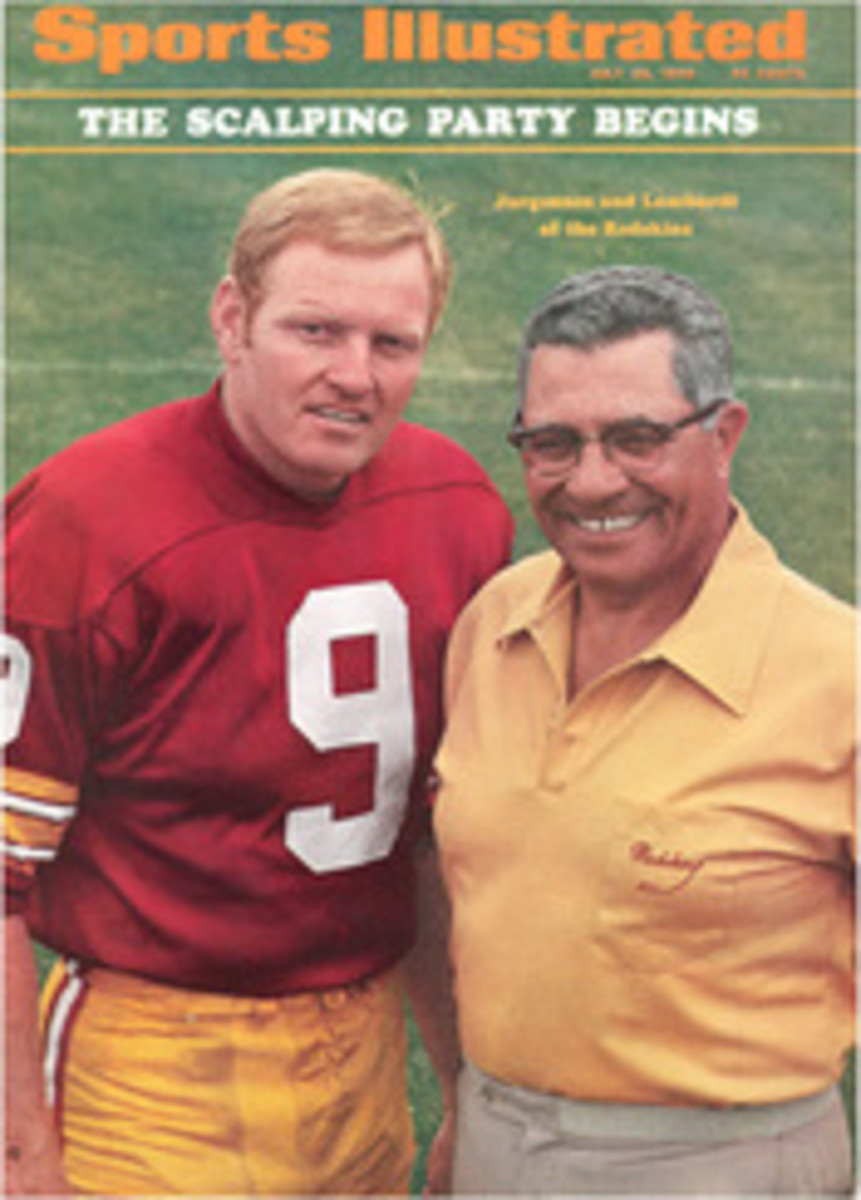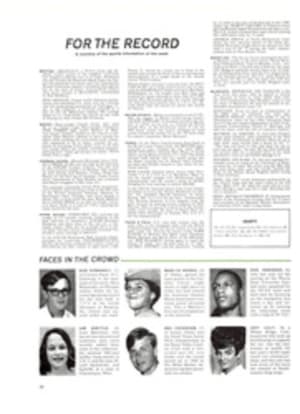
LETTER FROM THE PUBLISHER
Back in 1334 A.D. a travel writer named Ibn Batuta considered the awesome mountains of northern Afghanistan, listened to the stories about them and gave them a name: Hindu Kush. The word kush means killer or destroyer; the mountains were known, literally, as the Hindu-Killer. In the intervening centuries the experiences of a variety of explorers provided no reason to change the name.
An account of a more recent expedition to the Hindu Kush begins on page 30 of this issue. It was decidedly informal, almost casual, something of a vacation trip to the Killer—really a kind of picnic, if you can imagine a picnic that involved a week of toting 50-pound backpacks through unmapped country, and then carrying heavy cameras and sound equipment to the top of a 20,000-foot peak. SPORTS ILLUSTRATED'S participation in the adventure was also informal. Two months before the climbers set out, a friend happened to mention to Tom Shull, who produces SI's Wonderful World of Sport features for television, that a party of amateurs was preparing a climb in the Hindu Kush. Why not film its adventures and misadventures?
Such information as we were able to glean in the library of the American Alpine Club, the map room of the New York Public Library and the geological library of Columbia University strongly suggested that misadventures might be more common than anything else. Climbing in the Hindu Kush became popular in the 1930s but was stopped by the war and political difficulties. But by the mid-1960s, its popularity had again reached a peak, so to speak. One mountaineer complained that expeditions were "avidly devouring any small valley and unmapped area they chanced upon." In 1965 no less than seven expeditions were planned—Austrian, German, Czech and Italian. (Only three made the journey.) In the summer of that year an amazingly energetic Czech expedition of 13 experienced climbers scaled 17 peaks.
Some of the members of the American party had explored the country the year before. They had spent the intervening months getting into good physical shape, insofar as jogging, running and exercising can prepare judges, lawyers and college professors for high conquest. While the project was still being considered, Charles Groesbeck, one of the party, telephoned an old friend, Whit Tower, our horse racing writer, to ask if SPORTS ILLUSTRATED was seriously considering filming the expedition. Groesbeck is a professor of philosophy, but he is also an experienced mountain climber and guide. If the expedition was going to be pressed for time (30 days with a charter flight), it was also going to be determined: the one great chance for part-time climbing enthusiasts, experienced and inexperienced alike, to get above 20,000 feet.
When we met the party at the Dorset Hotel in New York City on the eve of their flight to Kabul, none of them (except Groesbeck) was known to any of us. Most were not known to each other either. Mike Wadley, a cameraman, had never climbed any mountain of any kind, let alone the massive peaks of the Hindu-Killer. Yet the group returned with no less than 20 hours of magnificent color film—unforgettable scenes of the wild valleys of Nuristan at the base of the mountains; poignant glimpses of the mountain people, who called on the Americans to become amateur doctors, treating dog bites, foot sores and eye infections; and finally the slow, labored climb of Koh-i-Tundi that produced some of the finest mountain scenes ever filmed. Made into an adventure special for television, called Once Before I Die, their story will be part of a series planned for nationwide programming this coming season.

